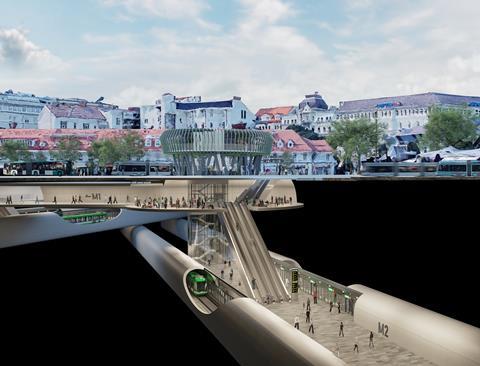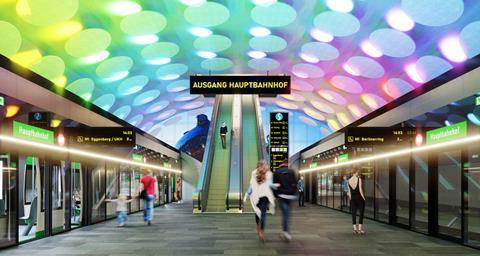
AUSTRIA: Proposals for a two-line automated metro network are included in a study into future transport concepts published by the city of Graz.
The study undertaken by special purpose company MUM 2030+ found that there were 452 000 passenger journeys per day into the central Graz area in 2020, 85% of which were by individual motorised vehicle. Meanwhile the city’s population is forecast grow from 294 000 to more than 320 000 inhabitants by 2030 and almost 400 000 by 2050.
It is envisaged that in combination with current and planned bus, tram and rail services, the metro could increase public transport’s market share by at least 45%, compared to 18% without the metro, and reduce car journeys by at least 12%.
Two lines
The proposed 11∙9 km Line M1 would run east–west from Berliner Ring to Jakominiplatz, where there would be an interchange with M2, and then to Graz Hauptbahnhof and Eggenberg. It would have 13 stations and an end-to-end journey time of 20 min.

The 13∙5 km M2 would run north–south from a future S-Bahn station at Gösting to Jakominiplatz, S-Bahn interchanges at Don Bosco and Wetzelsdorf, and a park-and-ride site at Webling. It would have 14 stations and a journey time of 22 min.
Services would run every 2½ to 5 min. The trainsets would be 30 m long with a capacity of 220 passengers, and be designed for potential operation in pairs.
Around 43% of Graz residents would be within 600 m of a station, and ridership is estimated at 200 000 passengers/day.
The cost of the project is estimated at €3·2bn, with opening in 2030 at the earliest.



